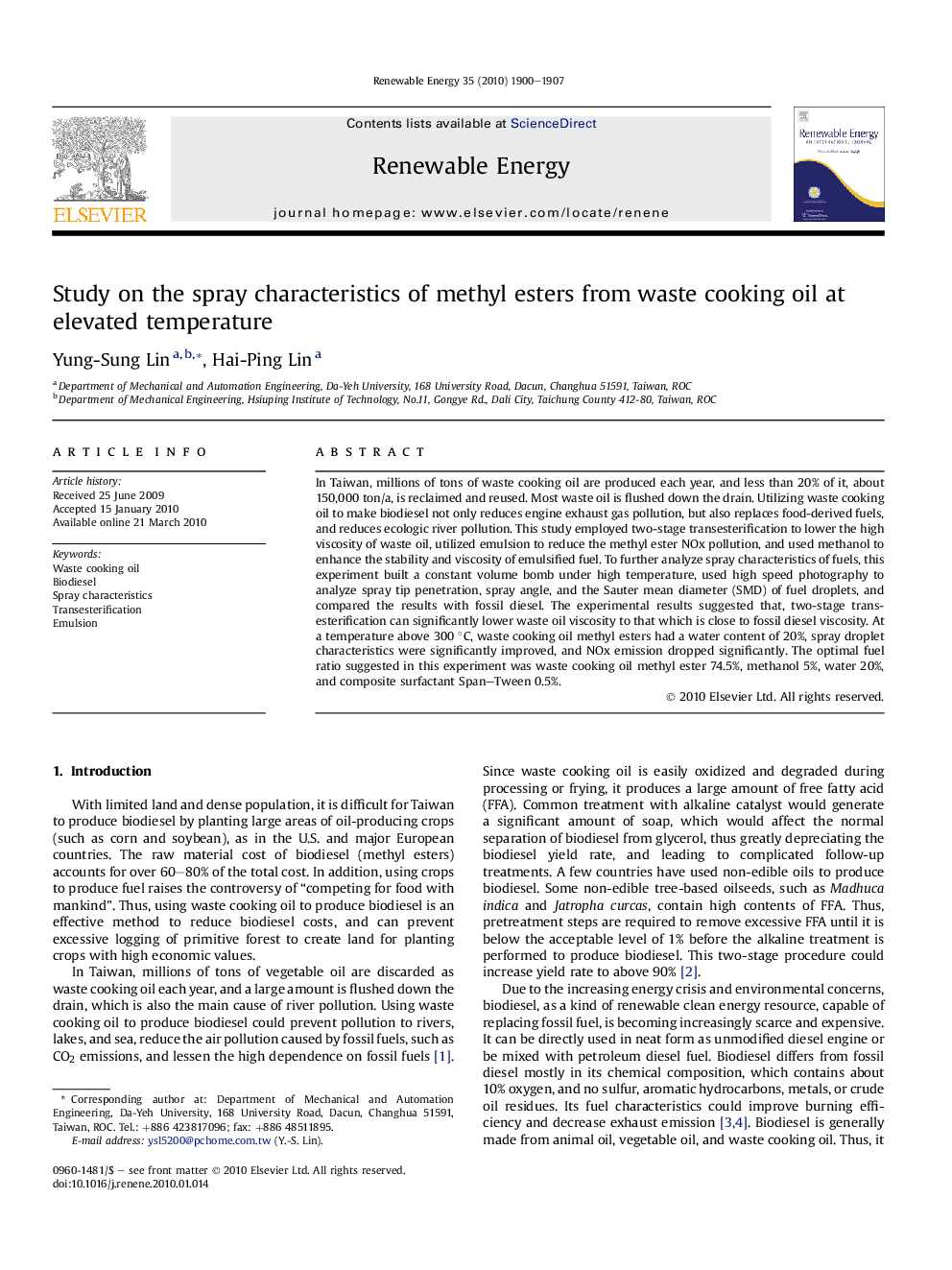| کد مقاله | کد نشریه | سال انتشار | مقاله انگلیسی | نسخه تمام متن |
|---|---|---|---|---|
| 301783 | 512516 | 2010 | 8 صفحه PDF | دانلود رایگان |

In Taiwan, millions of tons of waste cooking oil are produced each year, and less than 20% of it, about 150,000 ton/a, is reclaimed and reused. Most waste oil is flushed down the drain. Utilizing waste cooking oil to make biodiesel not only reduces engine exhaust gas pollution, but also replaces food-derived fuels, and reduces ecologic river pollution. This study employed two-stage transesterification to lower the high viscosity of waste oil, utilized emulsion to reduce the methyl ester NOx pollution, and used methanol to enhance the stability and viscosity of emulsified fuel. To further analyze spray characteristics of fuels, this experiment built a constant volume bomb under high temperature, used high speed photography to analyze spray tip penetration, spray angle, and the Sauter mean diameter (SMD) of fuel droplets, and compared the results with fossil diesel. The experimental results suggested that, two-stage transesterification can significantly lower waste oil viscosity to that which is close to fossil diesel viscosity. At a temperature above 300 °C, waste cooking oil methyl esters had a water content of 20%, spray droplet characteristics were significantly improved, and NOx emission dropped significantly. The optimal fuel ratio suggested in this experiment was waste cooking oil methyl ester 74.5%, methanol 5%, water 20%, and composite surfactant Span–Tween 0.5%.
Journal: Renewable Energy - Volume 35, Issue 9, September 2010, Pages 1900–1907